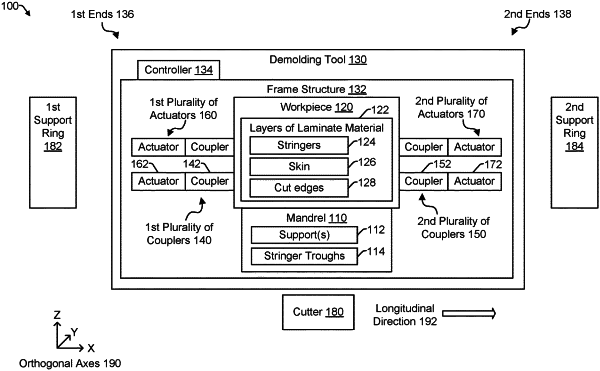| CPC B29C 33/485 (2013.01) [B29C 33/44 (2013.01); B29C 37/0003 (2013.01); B64C 1/064 (2013.01); B29L 2031/3082 (2013.01)] | 24 Claims |

|
1. A method of removing from a mandrel a workpiece having a tubular shape defining a plurality of unequal circumferences spaced apart along a longitudinal axis, the method comprising:
after the workpiece is cured on the mandrel, cutting the workpiece along a direction between a first end of the workpiece and a second end of the workpiece using a cutting tool configured to cut the workpiece along a single cut line, wherein the first end of the workpiece has a first circumference that is smaller than a second circumference of the second end of the workpiece;
applying, via a demolding tool, first forces to the first end of the workpiece to deform the first end of the workpiece to at least partially disengage the first end of the workpiece from a first end of the mandrel, wherein the demolding tool comprises a first particular coupler arranged to couple to a side of the workpiece opposite of the single cut line; and
after applying the first forces, applying second forces, via the demolding tool, to the second end of the workpiece to further deform the workpiece and at least partially disengage the second end of the workpiece from the mandrel.
|